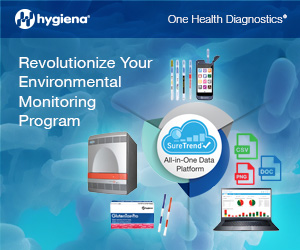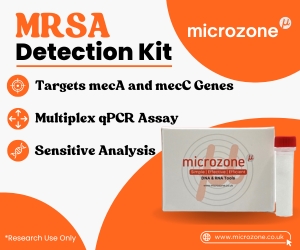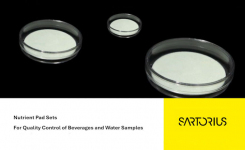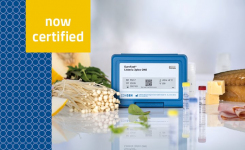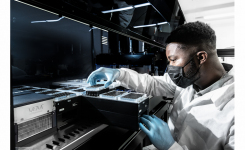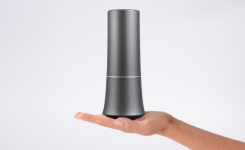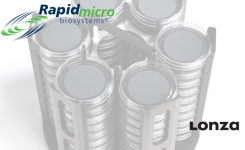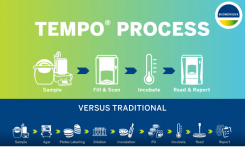Lab M's New MacConkey Agar Homes in on Enterococci
go back to news archives| Enterococci on Lab M MacConkey Agar No.2 | Microbiology specialist Lab M, has added a modified MacConkey Agar to its range of dehydrated culture media. MacConkey Agar No.2 contains bile salts No. 2 for the recognition of Enterococci and is especially useful when these organisms are present alongside coliforms and non-lactose fermenters in water, sewage and food products. Enterococci appear on MacConkey Agar No.2 as small, intensely coloured, red-purple colonies. Colonies of non-lactose fermenters appear colourless, while bile tolerant Gram-positive organisms, such as Staphylococci and non-faecal Streptococci, are completely inhibited. |
Able to tolerate a wide range of environmental conditions, enterococci are frequently sought as indicators of faecal pollution. To ensure public health, raw, potable and waste water needs to be carefully and efficiently monitored for microbial contamination. Enterococcus species are also responsible for many clinical infections including those of the urinary tract, bacteremia, bacterial endocarditis, diverticulitis, and meningitis. The new MacConkey Agar No. 2 is the latest addition to Lab M's comprehensive portfolio. It makes the detection and identification of Enterococci straightforward, enabling effective monitoring in both water treatment and food industry environments. For more information on Lab M's MacConkey Agar No.2 visit www.labm.com |
NOTE: This item is from our 'historic' database and
may contain information which is not up to date.
Source : Lab M View Company Information
Posted on June 11, 2010
LATEST MICROBIOLOGY NEWS
-
New Self-collection Devices from MWE
01 Jul 2025
MICROBIOLOGY EVENTS
-
AI for Food Safety Professionals
8 Jul 2025 -
Main Challenges in Allergen Testing and How to Overcome Them
9 Jul 2025 -
Getting Equipped for the Future with the New MAS-100 Sirius® Microbial Air Sampler
10 Jul 2025 -
FEMS Micro
14 Jul 2025 -
Unmasking Endotoxins: A Sample Preparation Strategy to Overcome LER
15 Jul 2025 -
IAFP 2025
27 Jul 2025 -
ADLM 2025
27 Jul 2025 -
Food Safety Culture Workshop
9 Sep 2025 -
Who are the "Real" Spoilers in Food?
11 Sep 2025 -
CPD accredited course: Level 3 HACCP & Food Safety
15 Sep 2025



